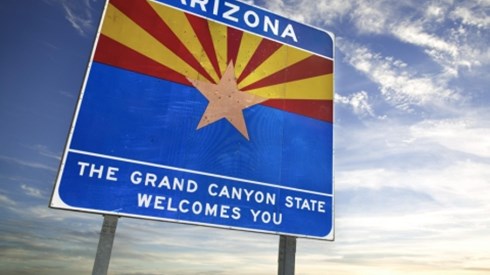If there are two words that succinctly and accurately describe Arizona as a captive insurance company domicile, those words would be "impressive growth."
In 2024, Arizona had 201 licensed captives, including cell captives, up from 121 in 2017.
Captive premium growth in Arizona has been striking. Premiums rose from $9.3 billion in 2020 to $13.61 billion in 2024, reflecting an increase of more than 40 percent over the past 5 years.
Captive managers attribute that growth to several factors. One key factor: Arizona, unlike, many other domiciles, does not impose a tax on captives' premium volume.
"That is a very attractive feature. That is where Arizona stands out," said Kimberly Wack, a director with Aon PLC in Phoenix.
To be sure, captive insurers pay other fees, but they are modest. For example, captives pay an annual $5,500 licensing fee.
Not imposing a "premium tax is a big plus for Arizona," said Diana L. Dunkin-Vasquez, chief captive analyst with the Arizona Department of Insurance and Financial Institutions in Phoenix.
Also unlike many other domiciles, state captive regulators have funds, authorized under legislation passed in 2017, to cover expenses they incur in promoting the state's captive insurance industry.
"This is an indication of how supportive state legislators are of the state's captive statute," said Stephen Briggs, a legislative and public affairs officer with the Arizona Department of Insurance and Financial Institutions in Phoenix.
Other factors propelling captive growth include the high quality and accessibility of captive regulators.
"They are very flexible and easy to work with," said Aon's Ms. Wack.
At the same time, captive regulators take the time to meet with captive sponsors and managers.
"They are very available and interactive" with the Arizona Captive Insurance Association (ACIA), noted Victoria Fimea, a member of the ACIA's Board of Directors, and earlier a senior vice president, legal counsel, and head of the regulatory department—North America for Artex Risk Solutions in Mesa, Arizona, adding that a state captive regulator always attends the association's breakfast meetings.
Those attractions have not gone unnoticed. Indeed, some of the biggest and best known US corporations in industries as diverse as health care, manufacturing, banking, and insurance, have set up captives in Arizona.
"We have some of the premier captives in the world," said J. Michael Low, the prior president of the ACIA and of counsel with Kutak Rock LLP in Scottsdale, Arizona.
At the same time, Arizona's appeal as a captive domicile has gained the attention of those with captives in other domiciles. In fact, between 10 percent and 15 percent of Arizona's captive insurance companies have come from other domiciles where they were originally licensed.
And more captives are expected to move to Arizona. "We have seen an uptick of interest" from captives in other domiciles, Vincent Gosz, Arizona's former chief captive analyst said earlier, adding that "the future is very bright. We have grown steadily and predictably, and we think that will likely continue in the future."
Arizona capital and surplus requirements vary by captive type. For example, the minimum capital and surplus requirement for single-parent captives is $250,000 and $500,000 for most other types of captives.
In addition, captives have to hold at least one annual meeting in Arizona and have at least one Arizona resident director.







